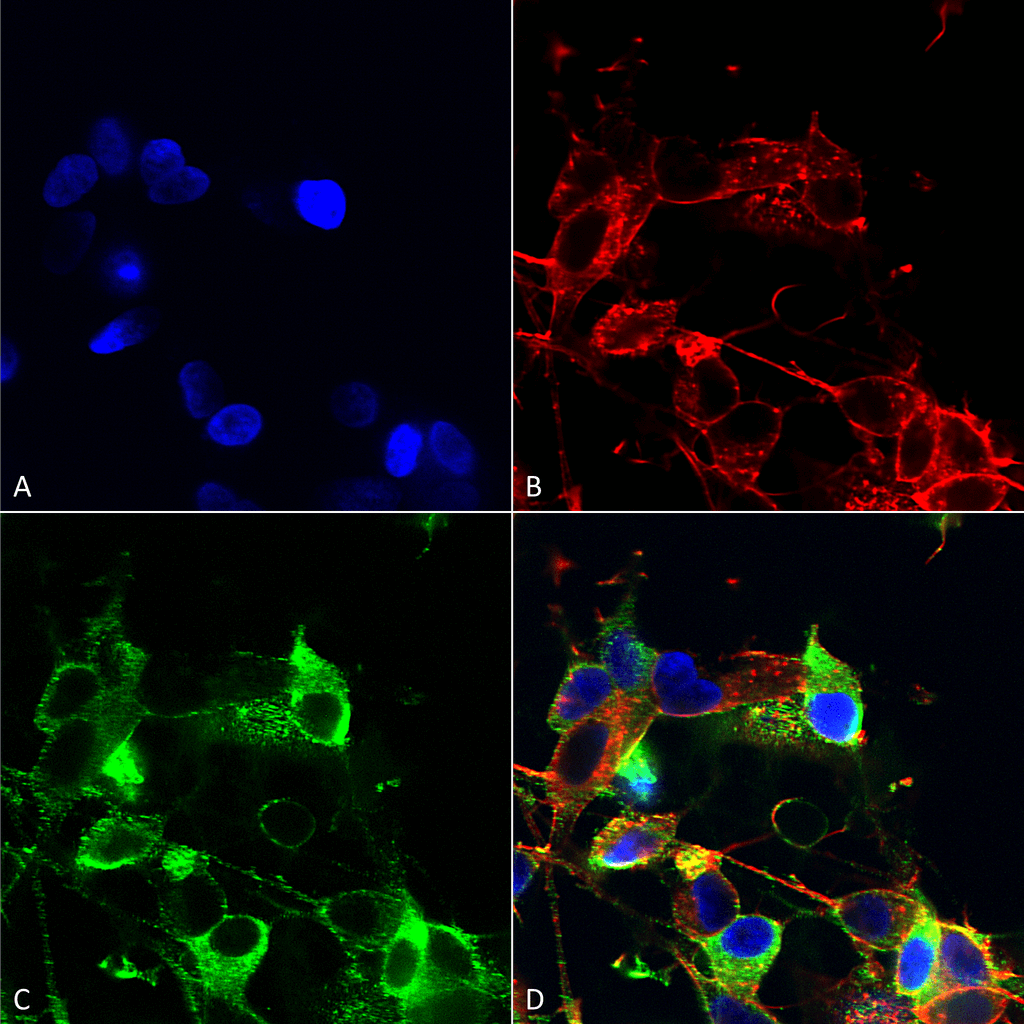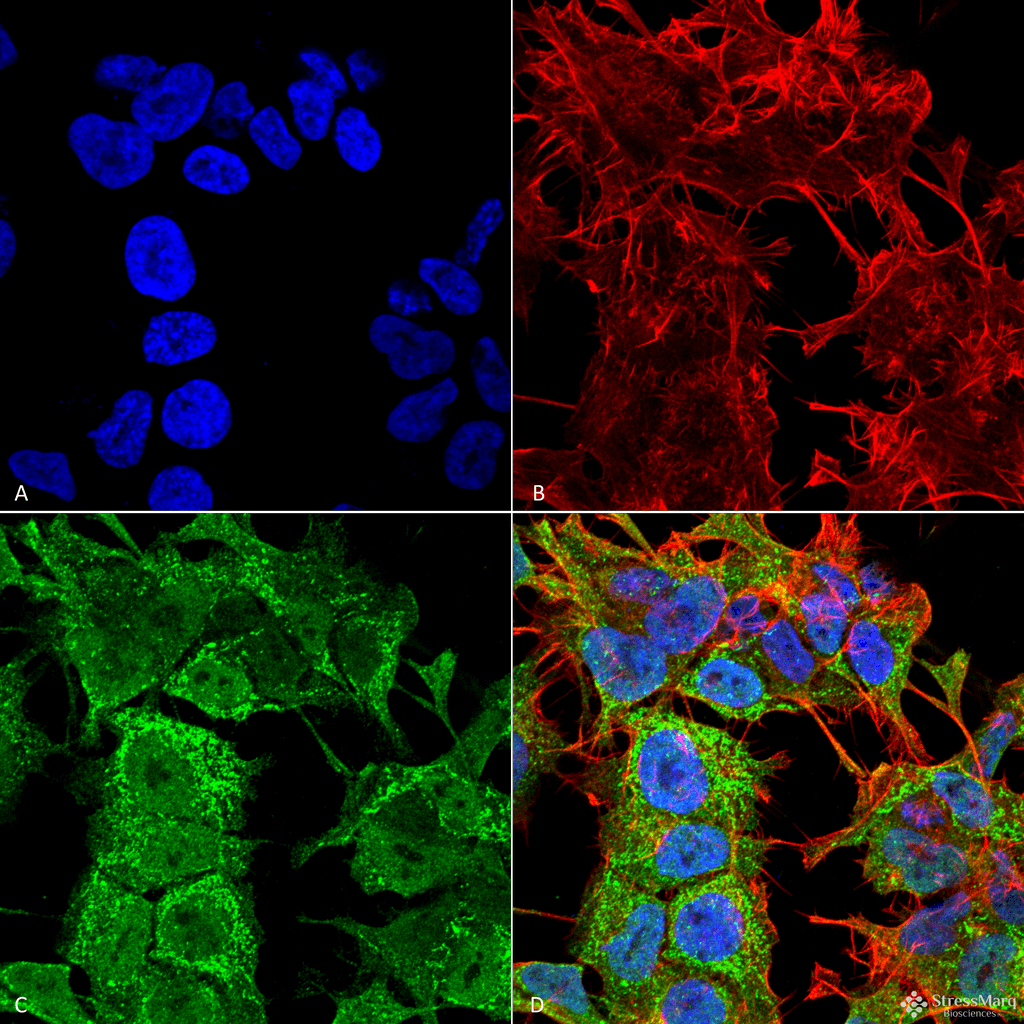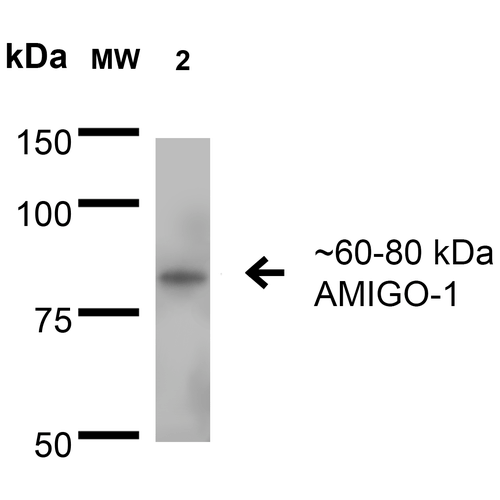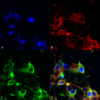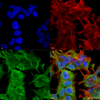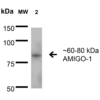Anti-AMIGO-1 Antibody (56530)
$466.00
| Host | Quantity | Applications | Species Reactivity | Data Sheet | |
|---|---|---|---|---|---|
| Mouse | 100ug | WB,IHC,ICC/IF | Human, Mouse, Rat |  |
SKU: 56530
Categories: Antibody Products, Neuroscience and Signal Transduction Antibodies, Products
Overview
Product Name Anti-AMIGO-1 Antibody (56530)
Description Anti-AMIGO-1 Mouse Monoclonal Antibody
Target AMIGO-1
Species Reactivity Human, Mouse, Rat
Applications WB,IHC,ICC/IF
Host Mouse
Clonality Monoclonal
Clone ID S86-36
Isotype IgG1
Immunogen Fusion protein corresponding to aa 554-574, the cytoplasmic C- terminus, of human AMIGO-1 (accession no.Q86WK6).
Properties
Form Liquid
Concentration 1.0 mg/mL
Formulation PBS, pH 7.4, 50% glycerol, 0.09% sodium azide.Purified by Protein G affinity chromatography.
Buffer Formulation Phosphate Buffered Saline
Buffer pH pH 7.4
Buffer Anti-Microbial 0.09% Sodium Azide
Buffer Cryopreservative 50% Glycerol
Format Purified
Purification Purified by Protein G affinity chromatography
Specificity Information
Specificity This antibody recognizes human, mouse and rat AMIGO-1. It does not cross- react with AMIGO-2 or AMIGO-3.
Target Name Amphoterin-induced protein 1
Target ID AMIGO-1
Uniprot ID Q86WK6
Alternative Names AMIGO-1, Alivin-2
Gene Name AMIGO1
Sequence Location Cell membrane, Perikaryon, Cell projection, dendrite, Cell projection, axon
Biological Function Promotes growth and fasciculation of neurites from cultured hippocampal neurons. May be involved in fasciculation as well as myelination of developing neural axons. May have a role in regeneration as well as neural plasticity in the adult nervous system. May mediate homophilic as well as heterophilic cell-cell interaction and contribute to signal transduction through its intracellular domain. Assembled with KCNB1 modulates the gating characteristics of the delayed rectifier voltage-dependent potassium channel KCNB1. {UniProtKB:Q80ZD7, UniProtKB:Q80ZD8}.
Research Areas Neuroscience
Background The amphoterin-induced gene and ORF (AMIGO) family of proteins consists of AMIGO-1, AMIGO-2 and AMIGO-3. All three members are single pass type I membrane proteins that contain several leucine-rich repeats, one IgG domain and a transmembrane domain. The AMIGO proteins are specifically expressed on fiber tracts of neuronal tissues and participate in their formation. They can form complexes with each other, but can also self-bind. AMIGO1, (also designated Alivin2) promotes growth and fasciculation of neurites and plays a role in myelination and fasciculation of developing neural axons.
Application Images




Description Immunocytochemistry/Immunofluorescence analysis using Mouse Anti-AMIGO-1 Monoclonal Antibody, Clone S86-36 (56530). Tissue: Neuroblastoma cells (SH-SY5Y). Species: Human. Fixation: 4% PFA for 15 min. Primary Antibody: Mouse Anti-AMIGO-1 Monoclonal Antibody (56530) at 1:200 for overnight at 4°C with slow rocking. Secondary Antibody: AlexaFluor 488 at 1:1000 for 1 hour at RT. Counterstain: Phalloidin-iFluor 647 (red) F-Actin stain; Hoechst (blue) nuclear stain at 1:800, 1.6mM for 20 min at RT. (A) Hoechst (blue) nuclear stain. (B) Phalloidin-iFluor 647 (red) F-Actin stain. (C) AMIGO-1 Antibody (D) Composite.

Description Immunocytochemistry/Immunofluorescence analysis using Mouse Anti-AMIGO-1 Monoclonal Antibody, Clone S86-36 (56530). Tissue: Neuroblastoma cell line (SK-N-BE). Species: Human. Fixation: 4% Formaldehyde for 15 min at RT. Primary Antibody: Mouse Anti-AMIGO-1 Monoclonal Antibody (56530) at 1:100 for 60 min at RT. Secondary Antibody: Goat Anti-Mouse ATTO 488 at 1:100 for 60 min at RT. Counterstain: Phalloidin Texas Red F-Actin stain; DAPI (blue) nuclear stain at 1:1000, 1:5000 for 60min RT, 5min RT. Localization: Cell Membrane, Nucleus. Magnification: 60X. (A) DAPI (blue) nuclear stain. (B) Phalloidin Texas Red F-Actin stain. (C) AMIGO-1 Antibody. (D) Composite.

Description Western Blot analysis of Rat Brain Membrane showing detection of 60-80 kDa AMIGO-1 protein using Mouse Anti-AMIGO-1 Monoclonal Antibody, Clone S86-36 (56530). Lane 1: Molecular Weight Ladder. Lane 2: Rat Brain Membrane. Load: 15 µg. Block: 2% BSA and 2% Skim Milk in 1X TBST. Primary Antibody: Mouse Anti-AMIGO-1 Monoclonal Antibody (56530) at 1:200 for 16 hours at 4°C. Secondary Antibody: Goat Anti-Mouse IgG: HRP at 1:1000 for 1 hour RT. Color Development: ECL solution for 6 min in RT. Predicted/Observed Size: 60-80 kDa.
Handling
Storage This antibody is stable for at least one (1) year at -20°C.
Dilution Instructions Dilute in PBS or medium that is identical to that used in the assay system.
Application Instructions Immunoblotting: use at 1ug/mL. Predicted molecular weight is ~60-80kDa depending on maturity/glycosylation.
Positive control: rat brain lysate.
These are recommended concentrations.
Endusers should determine optimal concentrations for their applications.
Positive control: rat brain lysate.
These are recommended concentrations.
Endusers should determine optimal concentrations for their applications.
References & Data Sheet
Data Sheet  Download PDF Data Sheet
Download PDF Data Sheet
 Download PDF Data Sheet
Download PDF Data Sheet

